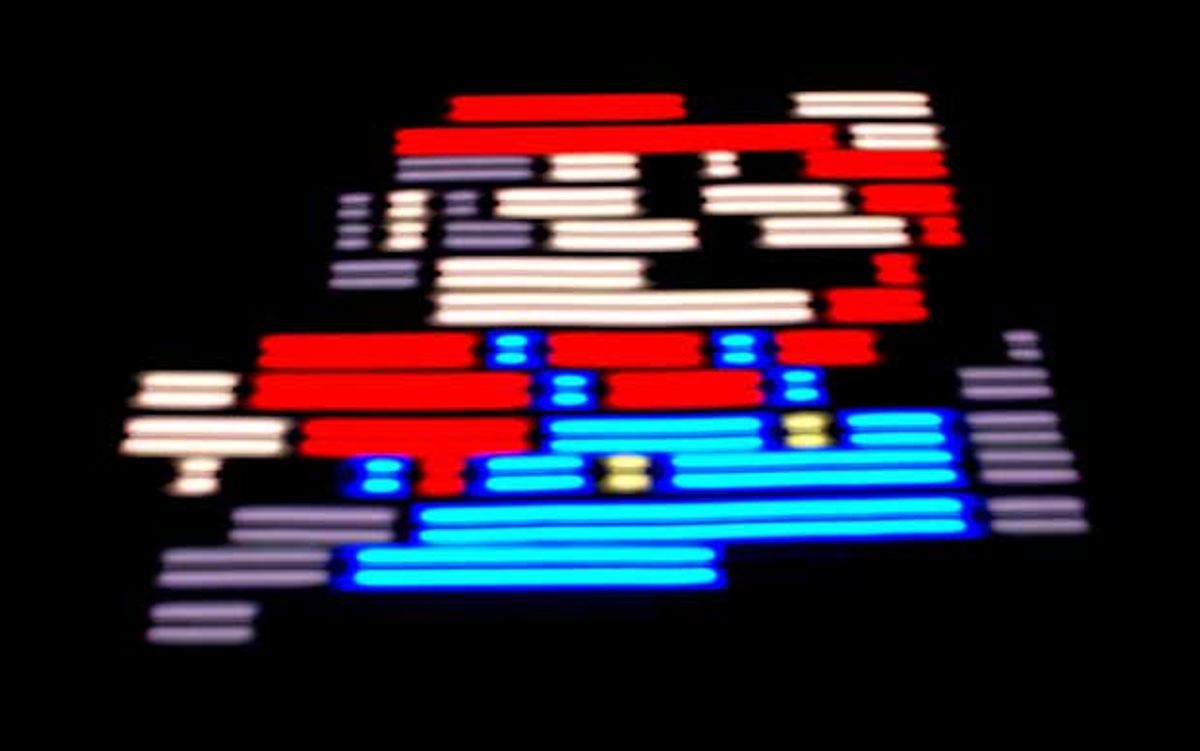We may have taken some time off last week to be thankful for the fact that birds are edible, but the rest of the world had better things to do. Over in Switzerland, Thymio has been spending some quality time learning how to do light paintings. We covered this before, when Mariane Brodier got the little mobile robots to make art, but now they can produce top-quality 8-bit video game characters, among other things. And it’s easy enough that even you (and your robot) could do it.
The technique here is easy to understand. The little Thymio robots have light sensors underneath, and they use one to follow a particular value of grey in the middle of a long continuous strip that grades from black to white. It’s a slight refinement of a more traditional line-following program, in that the gradient allows the robot to continually make small corrections to its heading with a single sensor, whereas if it was following a solid black line, it would have to make much larger corrections whenever it drifted off.
The other light sensor is used to read a very simple four bit barcode that runs parallel to the line. The barcode starts with black (a sync bit telling the robot that the barcode is starting), and then the other three bits can be a combination of black and white that corresponds to one of eight preset colors. If you wanted to use more colors, you could make your barcodes longer.
Once you have the track (gray strip and barcodes) set up, making the light painting is easy: each Thymio robot drives along the line, reads the color barcodes, and then changes its color in response. Do this in a dark room with a camera taking an exposure of several minutes (or longer, depending on how long the track is), and you’ll end up with a lovely light painting of whatever was encoded into the track.
The picture of Mario at the top of this article took one robot over 20 minutes as it looped back and forth, but with seven robots running in parallel, they managed to make the same drawing in just 2 minutes.
Here are some other 8-bit long-exposure pictures that Thymio was able to draw:
If you like this kind of thing, all of the software (and templates for the tracks) are freely available for download. And for what it’s worth, Thymio is a great first robot for kids: designed by roboticists and educators at EPFL in Switzerland, it’s mobile, colorful, easy to program, has tons of online support and continual development, and only costs about $125 USD, because EPFL isn’t trying to make any money on it.
We’ve got a longer article on the robot with more details, and you can see more examples of all the kinds of things that Thymio can do here.
[ Thymio ]
Thanks Francesco!
Evan Ackerman is a senior editor at IEEE Spectrum. Since 2007, he has written over 6,000 articles on robotics and technology. He has a degree in Martian geology and is excellent at playing bagpipes.







